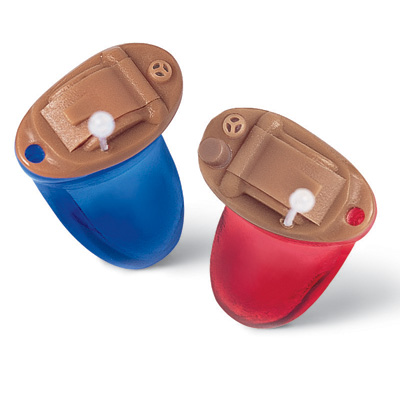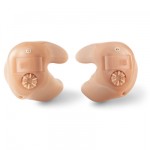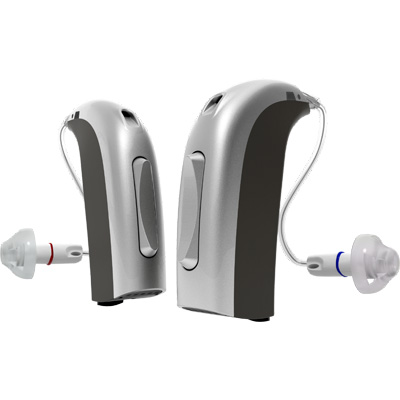Hearing Aids
Hearing instruments come in a wide range of styles and sizes, each designed to address individual hearing loss issues.
Different Styles of Hearing Aids

In-the-Canal (ITC) and Completely-in-the-Canal (CIC) Aids These aids are contained in a tiny case that fits partly or completely into the ear canal. They are the smallest aids available and offer some cosmetic and listening advantages.

In-the-Ear (ITE) Aids All parts of the aid are contained in a shell that fills in the outer part of the ear. These aids are larger than canal aids and, for some people, may be easier to handle than smaller aids.

Behind-the-Ear (BTE) Aids All parts of the aid are contained in a small plastic case that rests behind the ear. The case is connected to an earmold by a piece of clear tubing. This style is often chosen for young children for safety and growth reasons

Behind-the-Ear Aid: Open Fitting A small plastic case rests behind the ear, and a very fine clear tube runs into the ear canal. Inside the ear canal, a small, soft silicone dome or a molded, highly vented acrylic tip holds the tube in place. These aids offer cosmetic and listening advantages and are used typically for adults.

Receiver-in-Canal Aids These aids look very similar to the behind-the-ear hearing aid with a unique difference: the speaker of the hearing aid is placed inside the ear canal, and thin electrical wires replace the acoustic tube of the BTE aid. These aids also offer cosmetic and listening advantages and are typically used for adults.
Extended Wear Hearing Aids These aids are devices that are nonsurgically placed in the ear canal by an audiologist. They are worn up to several months at a time without removal. The devices are made of soft material designed to fit the curves of the ear. They are worn continuously and then replaced with a new device. They are very useful for active individuals because their design protects against moisture and earwax, and they can be worn while exercising, showering, etc.